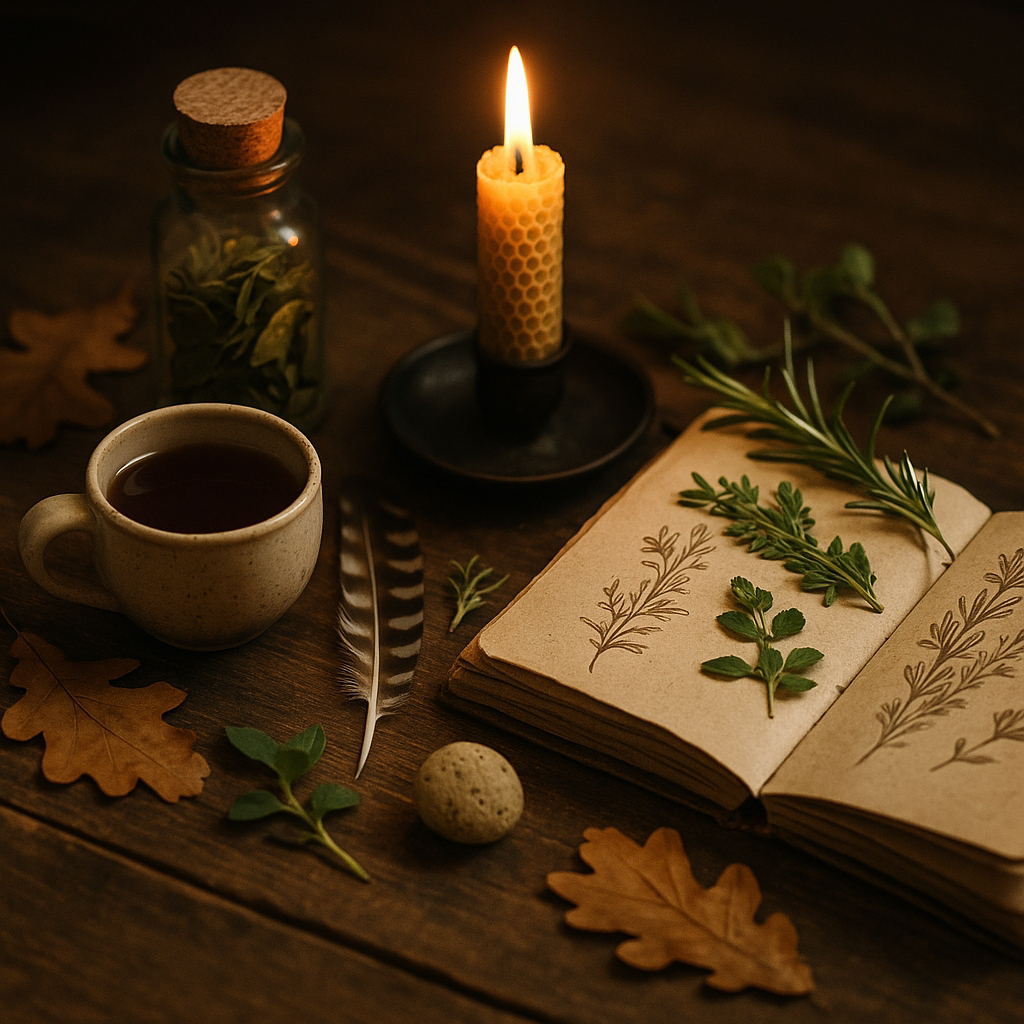But if you’ve never tried blending oils before, it can feel a little overwhelming. Where do you start? What do you blend? How do you know what works together?
Don’t worry, Beautiful Soul. This guide will walk you through everything you need to know to begin blending your own magical oils with confidence and purpose.
🌟 Why Blend Your Own Oils?
Blending your own ritual oils allows you to:
- Infuse your intent directly into your work – Your energy is in every drop.
- Customize the blend to your specific needs – Instead of using a generic “prosperity” oil, you can tailor it to a very specific goal like “steady business income” or “abundance without burnout.”
- Work intuitively with ingredients you already love or connect with – No more guessing what’s in a proprietary blend.
- Create a deeper bond with your magical practice – Blending oils becomes part of the spell, not just a tool.
Plus, it’s fun. It’s witchy. And it smells amazing.
🧪 The Basic Components of a Ritual Oil
Every magical oil blend is made up of a few key parts:
1. Carrier Oil
This is your base. It dilutes essential oils and carries them safely onto the skin or onto objects. Choose a carrier oil that fits your purpose and your preferences.
Popular options:
- Jojoba oil – Lightweight, long shelf life, absorbs well.
- Sweet almond oil – Mild scent, easy to find.
- Grapeseed oil – Light texture, affordable.
- Olive oil – Great for kitchen witchery, but has a strong scent.
- Fractionated coconut oil – Clear, light, and great for roll-ons.
A good rule of thumb: Use about 1 tablespoon of carrier oil per 4–6 drops of essential oils for general magical use. You can go stronger if you’re only using it for anointing tools and not skin.
2. Essential Oils
These are your powerhouses. Each one carries energetic properties that align with magical intentions.
Examples:
- Lavender – Peace, protection, purification
- Cinnamon – Prosperity, passion, strength
- Rosemary – Memory, clarity, protection
- Patchouli – Grounding, abundance, attraction
- Frankincense – Spiritual connection, sacredness, banishing negativity
You’ll usually use 2–4 essential oils per blend, depending on your purpose and how complex you want the scent to be.
3. Optional Add-Ins
These aren’t necessary, but they add energy, intention, and visual beauty:
- Dried herbs or flowers – Like rose petals, calendula, mugwort, or rosemary.
- Crystals – A tiny piece of quartz, amethyst, or citrine can amplify your intent.
- Glitter or mica – Just a pinch can make your oil sparkle in candlelight (especially for glamour spells).
- Vitamin E oil – A few drops can help preserve your blend.
Just make sure your extras won’t go rancid or moldy in oil—dried is better than fresh.
🔮 Blending by Intention
Start with your magical goal. Are you blending an oil for:
- Love and attraction?
- Banishing and protection?
- Prosperity and abundance?
- Dreamwork and divination?
- Creativity and inspiration?
Once you know the intent, choose 2–4 essential oils whose magical properties support that goal.
Example: Protection Oil
- Carrier: Grapeseed oil
- Essential oils: Rosemary, frankincense, clove
- Add-ins: Black tourmaline chip, dried basil leaf
Example: Love & Self-Worth Oil
- Carrier: Jojoba oil
- Essential oils: Rose, geranium, vanilla
- Add-ins: Rose quartz chip, dried rose petals, gold mica
Trust your intuition. If a certain oil just feels right to you, go with it.
🧘♀️ Intuition vs. Recipe
You can absolutely follow tried-and-true recipes (and we’ll do a full post with some of my favorites soon!). But don’t be afraid to blend with your intuition.
Try this:
- Sit quietly with your oils.
- Hold each one in your hands and ask yourself: Does this feel right for what I’m trying to create?
- Let your nose guide you. If a scent feels emotionally aligned with your intent, it probably is.
You are the witch. The recipe is just a suggestion.
🕯️ How to Use Your Blended Ritual Oils
There are so many ways to bring your oils into your magical practice:
- Anoint candles before spells or rituals.
- Dress your altar tools to cleanse and empower them.
- Anoint yourself on pulse points before spellwork or meditation.
- Add a few drops to spell jars, poppets, or sachets.
- Use in a bath (with proper dilution and skin-safe oils only).
- Roll on your wrists for subtle energetic alignment throughout the day.
Just be mindful of essential oil safety—some oils are not safe for pregnant people, pets, or sensitive skin. Always research and patch test if using on your body.
🧴 Storing Your Oils
Magical oils are best stored in:
- Dark glass bottles (amber or cobalt)
- Tightly sealed caps
- Cool, dry places away from sunlight
Label your blends with:
- The name
- Ingredients
- Date blended
- Intention or use
Most ritual oils last 6 months to a year. If it starts to smell off or look cloudy, it’s time to retire it and make a new batch.
✍️ Journaling Your Blends
Keep a section in your Book of Shadows or magical journal just for your oil recipes. Record:
- The ingredients and ratios
- The intention behind the blend
- How you used it
- Any results or feelings you noticed
Over time, this becomes your personal grimoire of magical oils—a beautiful reflection of your craft.
🧡 Final Thoughts
Blending your own ritual oils is an empowering, deeply personal way to add magic to your everyday practice. It’s not about having the “right” tools or perfect ratios—it’s about infusing your intention into every drop and trusting your own magic.
So go ahead. Open those bottles. Inhale deeply. Let your intuition lead the way. The blend you create today might be the one that shifts your energy tomorrow.






